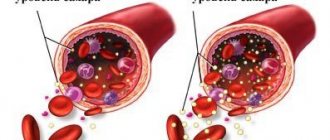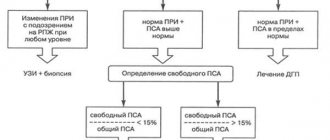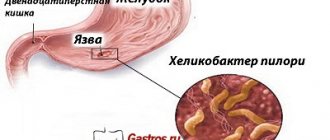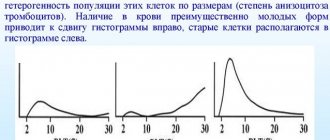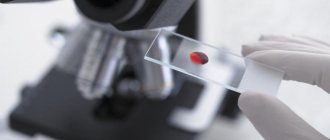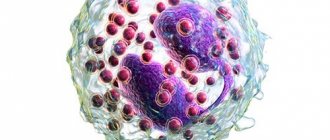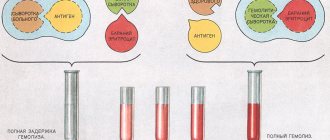Types of Hgb and its structure
In human blood, hgb is found in different forms, which can be pathological and physiological. Kinds:
- Carboxyhemoglobin (HbCO) is a combination of hemoglobin molecules with carbon molecules. Gives blood a dark cherry tint. The HbCO content increases in the blood when there is a high content of carbon monoxide in the inhaled air (during fires, gas leaks from heating devices).
- Oxyhemoglobin is a compound with oxygen molecules. Its main part is found in arterial blood, which is why it has a bright red color. With its help, cells and tissues are provided with oxygen. With its deficiency, the body suffers from hypoxia.
- Glycated hemoglobin - reflects the level of hemoglobin bound to glucose. Unlike the usual measurement of blood glucose, glycohemoglobin indicates the level of glucose in the fluid over a period of 3 to 4 months. In the presence of diabetes mellitus, the reaction rate of the addition of hemoglobin to glucose accelerates. The higher its indicators, the higher the level of glycemia in recent months and the greater the risk of developing diabetes complications.
- Fetal hemoglobin (fetal) - is synthesized from the period of placenta development (6-7 weeks). From the 11th-12th it turns into embryonic. At the time of birth, the amount of fetal hemoglobin is about 80%. During the first year, its synthesis begins to slow down and by three years its level corresponds to the level of adults (1.5%).
- Methemoglobin - appears when red blood cells are exposed to nitrates and nitrites, under the influence of which normal protein is converted into methemoglobin. When present, the blood becomes chocolate brown and the skin becomes cyanotic in color.
One red blood cell contains on average 400,000,000 hgb molecules. Hemoglobin has 2 components: globin protein, which accounts for 96%, and heme, which contains iron, 4%. In order for heme to attach oxygen, its valency must be equal to 2. If there are free radicals (strong oxidizing agents) in the blood, divalent iron turns into ferric iron and the addition of oxygen in this case is impossible, so the body begins to suffer from hypoxia.
Important! Antioxidants (vitamin A, C, E, etc.) prevent the formation of ferric iron by inactivating radicals.
Hemoglobin is below normal
A decrease in the amount of hemoglobin (and/or red blood cells) in the blood is called anemia. There are many types of anemia. Low hemoglobin levels in most cases indicate iron deficiency in the body - iron deficiency anemia. In addition, low hemoglobin may be a sign of aplastic anemia, anemia due to vitamin B12 or folic acid deficiency, hemolytic anemia, or sickle cell anemia. Anemia can also be caused by kidney disease and chemotherapy.
Symptoms of low hemoglobin
With low hemoglobin, the following symptoms are possible:
- fatigue, weakness
- dizziness, loss of consciousness
- headache
- dyspnea
- fast, irregular heartbeat
- chest pain
- pale skin, dark circles under the eyes
- feeling of cold, numbness of limbs
- hair loss, brittle nails
Causes of low hemoglobin
Low hemoglobin levels are usually associated with a disease or condition that causes the body to not have enough red blood cells. This may happen if:
- The body produces fewer red blood cells than required (aplastic anemia, iron deficiency anemia, cancer, cirrhosis, chronic kidney disease, some medications).
- The body destroys red blood cells faster than they can be produced (enlarged spleen, thalassemia, sickle cell disease, vasculitis)
- There is bleeding (from stomach or duodenal ulcers, hemorrhoids, oncology, heavy menstrual bleeding, frequent blood donation).
Risk factors for anemia
- elderly age
- consuming insufficient amounts of iron and other microelements in food
- heavy physical activity
- pregnancy
- chronic diseases
Low hemoglobin during pregnancy
Low hemoglobin during pregnancy is quite common. Mild anemia is a consequence of normal physiological changes. During pregnancy, the amount of blood increases by 20-30%, which means more iron is required to produce enough hemoglobin.
More severe anemia may put a child at an increased risk of developing anemia at an early age. Anemia in the first and second trimester increases the risk of premature birth and low birth weight. Also, low hemoglobin increases the risk of bleeding during childbirth and makes it more difficult to fight infections.
The most common types of anemia during pregnancy are:
- Iron-deficiency anemia
- anemia due to folic acid deficiency
- anemia due to vitamin B12 deficiency
Insufficient diagnosis and underestimation of the health status of the expectant mother increases the risks of complications. That is why, already at the stage of pregnancy planning, it is necessary to check the hemoglobin level in order to correct anemia and avoid further problems.
A number of factors contribute to low hemoglobin during pregnancy:
- short interval between pregnancies
- heavy menstrual bleeding before pregnancy
- toxicosis
- multiple pregnancy
Low hemoglobin in a child
Newborns at 6-8 weeks may experience a decrease in hemoglobin. This happens because they are running out of the red blood cells they were born with, and new red blood cells have not yet been produced in sufficient quantities.
In most children, mild anemia is asymptomatic and is detected during routine blood tests.
Treatment for anemia in children depends on the type of anemia and its causes. In most cases, it is necessary to change your diet or use dietary supplements and medications. In severe cases, long-term treatment and blood transfusions may be required. Most problems caused by anemia can be prevented if anemia is diagnosed early.
Indications and preparation for the test
Determination of the hgb level is included in the general blood test, which determines the total number of red blood cells, platelets, and leukocytes. More often, hemoglobin levels are determined when anemia is suspected or for preventive purposes in children and pregnant women. Also - for serious illnesses, injuries accompanied by bleeding, after childbirth, before and after operations.
For a general analysis, blood is drawn from a finger prick. Deciphering the analysis results takes 1-2 days. To get reliable results, you must:
- donate blood on an empty stomach;
- exclude physical activity during the day;
- do not drink alcoholic beverages for 48 hours;
- do not smoke on the day of delivery;
- stop taking medications 3-4 days in advance (if exception is not possible, you need to notify your doctor).
If diabetes is suspected, a test for glycated hemoglobin is performed. For the test, blood is donated from a vein; no special preparation is required, since glycated hgb reflects the sugar level for 2-3 months.
Important! Women are not recommended to take a hemoglobin test during menstruation, as the levels may be reduced due to blood loss and the analysis will not be informative.
Methods for determining hemoglobin
The level of hgb is determined by analyzing its derivatives, which are formed during the process of addition of chemical elements and oxidation. The following methods are highly informative: chemical, saponin, Sali, spectrophotometric. But for ordinary laboratories these methods are labor-intensive, so quick and simple methods are often used:
- Gasometric. They have high accuracy and complex, time-consuming calculations. The method involves oxidizing the blood of the subject in an alkaline environment with special chemicals.
- Colorimetric (calibration, hemiglobincyanide, hemichrome). Chemical elements are added to the biological material and the amount of hemoglobin is determined depending on the degree of color of the resulting solution.
- Determination of the amount of iron in hemoglobin. Reagents (amino acids or acids) are used to achieve an ultraviolet spectrum, then the iron level is determined using a spectrophotometer.
These methods have increased the speed of decoding and obtaining results.
Hemoglobin level in a child
In a child, hemoglobin begins to be produced in the womb at the earliest stages. This hemoglobin is different from the hemoglobin in adult blood and is called fetal hemoglobin. Before birth, fetal hemoglobin begins to be replaced by glycosylated hemoglobin. In the first years of life, the level of hemoglobin in a child’s blood varies significantly depending on age.
Low hemoglobin leads to oxygen starvation and, as a result, decreased immunity and developmental delays in children. Increased hemoglobin in a child is also dangerous - this condition is fraught with blockage of blood vessels.
Degrees of anemia
The level of hemoglobin in pathologies is often lower than increased. A decrease in iron-containing protein is called anemia or anemia. It is not an independent disease and is considered as a symptom of another pathology that provoked a drop in hemoglobin levels. When it decreases, the degree of anemic condition is indicated according to its severity:
- Light (hgb level up to 90 g/l). It has mild symptoms: weakness, fatigue, decreased performance, excessive sweating.
- Medium (from 70 to 90 g/l). Moderate severity of symptoms. It manifests itself as dry skin, constant fatigue, shortness of breath, arrhythmia, cracks in the corners of the mouth, headache and dizziness.
- Severe (less than 70 g/l) degree. Pronounced symptoms. It is characterized by: pale skin, changes in the shape and structure of nails, hair loss, numbness of the limbs, fragile tooth enamel, impaired sense of smell and taste.
Important! People who have chronic anemia are usually unaware of it, and symptoms are attributed to lack of sleep, poor diet, or fatigue.
Possible causes of low hemoglobin
The hgb level in a blood test in men, women and children is a significant factor in the diagnosis of many specific diseases. But this indicator can fluctuate for no apparent reason, being a reflection of the rhythm of life, habits and diet of a person. A decrease in hemoglobin in the blood - anemia, is divided into three stages:
- Mild - up to 90-110 g/l - is determined randomly during a blood test, does not require specific treatment, is corrected with nutrition.
- Moderate severity up to 70-90 g/l - the patient notes frequent dizziness, roughness of the skin and mucous membranes, problems with digestion and gastrointestinal tract function.
- Severe – less than 70 g/l – disruption of the cardiovascular system, pale skin, hair, nails, amenorrhea in women, dental problems, difficulty breathing, constant dizziness and fainting.
When it comes to nonspecific diseases, most often we can talk about a decrease in hemoglobin, the main reasons for which include:
- Monotonous diet with insufficient iron levels;
- Excessive emotional overload;
- Diets excluding meat products and B vitamins, without which iron absorption is impossible;
- Blood loss as a result of injuries, surgical interventions, childbirth and menstruation, when it comes to hgb in a blood test, low in women.
The above reasons are physiological and can be easily eliminated by increased nutrition with an emphasis on meat dishes and offal, as well as by taking iron-containing medications. Among the pathological conditions where anemia can be considered as a consequence of the disease, we can highlight:
- Gastrointestinal diseases that reduce the ability to absorb nutrients;
- Parasitic and infectious diseases;
- Disruption of the hematopoietic system, with early death of red blood cells (autoimmune diseases);
Normal indicators
Hemoglobin norms are different for men and women. In the analysis results, the hgb level is indicated in grams per liter. Indicators have a lower and an upper limit. Normal values for men from 18 to 65 years old are 130-160, after 65 years old – 120-165. In children, the level of iron-containing protein varies for different age groups.
| Age | Hemoglobin level |
| Up to 3 days | 130 – 200 |
| 2-6 months | 110 – 180 |
| 6-12 months | 105 – 150 |
| From 1 year to 12 years | 100 – 150 |
| 12-18 years old | 120 – 160 |
For women from 18 to 65 years old, normal values are from 120 to 140 g/l, after 65 years old – from 120 to 150 g/l. For pregnant women – from 100 to 140 g/l.
Units of measurement of hemoglobin in blood
The amount of hemoglobin in the blood can be expressed in SI (International System of Units) units:
- g/l (grams per liter)
- mmol/l
Hemoglobin can also be expressed in conventional units:
- g/dl
- g/100 ml
- g% (gram-percentage)
- mg/ml
g/dl = g/100 ml = g%
Conversion factor:
- g/l / 10 => g/dl,
- g/l = mg/ml,
- 1 g/l = 0.06206 mmol/l
- 1 g/dL = 0.6206 mmol/L
Decreased hemoglobin
A decrease in hemoglobin levels (hemoglobinopenia, iron deficiency anemia) is caused by pathological conditions, unbalanced nutrition, and vegetarianism. Reasons for decreased rates in women and men:
- damage to the red bone marrow;
- changes in blood composition;
- internal (hidden) bleeding;
- chronic hepatitis;
- pneumonia;
- autoimmune diseases;
- tuberculosis;
- parasitic diseases;
- impaired absorption of iron;
- failure in the process of synthesizing thyroid and ovarian hormones;
- acute blood loss;
- neoplasms;
- strict (hard) diets and fasting;
- alcohol abuse;
- frequent consumption of strong coffee.
If hemoglobin is reduced in the body, cells and tissues suffer from oxygen deficiency. The first changes begin to occur in the skin, hair and nails. The body tries to compensate for the lack of oxygen, redistribute its reserves and save energy. This is accompanied by weakness, dizziness, and headaches. If the hgb level does not increase and continues to decrease, this threatens:
- decreased immune defense;
- menstrual irregularities;
- weight loss;
- dysfunction of the lungs, central nervous system, heart;
- dysfunction of the genital organs in men;
- delay or arrest of physical and mental development in children.
In the absence of correction of hgb levels and the progression of its decrease, death is possible.
Deviation from the norm hgb in pregnant women
In a pregnant woman’s body, the blood volume increases and the blood thins accordingly. Against this background, the amount of hemoglobin may decrease slightly and this is not a pathology. Therefore, for pregnant women, hemoglobin standards are different:
- first trimester – from 110 to 150 g/l;
- second trimester – from 105 to 145 g/l;
- third trimester – from 100 to 140 g/l;
Normally, hemoglobin may decrease at the end of the second trimester and the beginning of the third. If the indicator drops to 24 weeks, this often means anemia. Possible reasons: lack of iron, copper, folic acid, zinc, dysbacteriosis, stress. The decrease is especially dangerous before 12 weeks of pregnancy. It can provoke toxicosis, late gestosis, premature birth, and intrauterine fetal hypoxia.
High rates are a risk of developing blood clots. Due to increased viscosity, blood circulates more slowly through the vessels, and this leads to a decrease in the delivery of oxygen and nutrition to the fetus. The cause of increased hb may be diseases of the gastrointestinal tract, kidneys and heart.
Hemoglobin is more than normal
A significant increase in hemoglobin is dangerous because the viscosity of the blood increases. Being viscous and unable to fully circulate, it does not nourish the organs well, and there is a risk of blood clots and blockage of blood vessels.
Hemoglobin is found in red blood cells, so a high hemoglobin level usually indicates an increased amount of red blood cells in the blood.
Symptoms of elevated hemoglobin
An increase in hemoglobin concentration in the blood is in most cases discovered by chance based on the results of a blood test. Symptoms of high hemoglobin are usually associated with the underlying disease that caused the increase.
Possible symptoms of high hemoglobin:
- Weakness, fatigue
- Itching all over the body
- Dizziness, confusion
- Increased blood clotting leads to swelling, numbness of body parts, temporary loss of vision, thrombosis
In some cases, a high level of hemoglobin may be a variant of the norm - it is observed in residents of high mountains and climbers (there is not enough oxygen in the mountain air, and the body, increasing the level of hemoglobin, increases its content in the blood). Also, a higher level of hemoglobin (compared to normal) can be observed when drinking insufficient amounts of fluid or smoking.
Causes of elevated hemoglobin
Pathological causes of increased hemoglobin levels may be:
- Dehydration due to vomiting, diarrhea, or taking diuretics
- Diseases of the lungs and heart, especially chronic ones
- Some tumors
- Bone marrow diseases (polycythemia vera)
- Abuse of anabolic steroids
Hemoglobin is higher than normal during pregnancy
During pregnancy, the upper limit of hemoglobin is lower than in non-pregnant women due to physiological changes in the body.
An increase in hemoglobin concentration during pregnancy is dangerous for both mother and child. At the same time, blood viscosity increases, the load on a woman’s cardiovascular system increases, and the likelihood of blood clots increases.
The study found that women with high hemoglobin concentrations in the first trimester have an increased risk of developing gestational hypertension.
Hemoglobin is higher than normal in children
A slight excess of hemoglobin in children is quite acceptable. But if the hemoglobin level significantly exceeds the limit, this situation requires a more detailed examination. A higher amount of hemoglobin in the blood is often associated with an excess of red blood cells or insufficient plasma volume. Quite often, an increase in hemoglobin indicates a loss of fluid in the child’s body (dehydration), which leads to blood thickening. It is provoked by intense sweating, nervous tension, insufficient drinking, prolonged stay in a room with dry and warm air, drinking diuretic tea, and increased temperature.
Many children with elevated hemoglobin do not have any symptoms of disease. If higher hemoglobin is caused by dehydration due to an intestinal infection, the child will have nausea and diarrhea. In some children, high hemoglobin is manifested by increased fatigue, impaired appetite, lethargy, drowsiness, increased blood pressure, headaches, and frequent bruising. If increased hemoglobin causes disruption of blood flow and the formation of blood clots, this may manifest itself as cyanosis of the lips and fingertips, numbness of body parts, and temporary loss of vision.
Deviation from the norm hgb in children
Hemoglobin levels are elevated in the first month of life, which is normal. After the excess red blood cells begin to break down, the hemoglobin level begins to decrease. Premature babies have lower hgb levels than full-term babies. They more often suffer from hypoxia and anemia. Hgb levels in children are affected by:
- maternal illnesses during pregnancy;
- massive bleeding during childbirth;
- nutrition of the newborn (breastfed babies rarely have low hemoglobin, unlike bottle-fed ones);
- malnutrition in children over 7 months - lack of meat and cereals on the menu;
- hereditary factors (the presence of low or high hemoglobin in parents).
High hemoglobin in children is more often associated with dehydration (especially if the child receives little fluid during artificial feeding), diarrhea, diabetes mellitus, diseases of the blood, kidneys, and respiratory system. High levels lead to thickening of the fluid and disruption of circulation. Low rates are usually caused by anemia. Associated with insufficient intake of iron from food or anemia of the mother during pregnancy. Other reasons include: impaired production and breakdown of red blood cells, chronic blood loss, gastrointestinal diseases. Symptoms of hemoglobin deficiency: lack or decreased appetite, sleep disturbances, pale skin, peeling skin, weight loss.
Hemoglobin during pregnancy
Hemoglobin levels are especially important during pregnancy. Hemoglobin is necessary for the full supply of nutrients and oxygen to the fetus. Until birth, the baby's circulatory system is connected to the mother's circulatory system. In a woman’s body, an additional circle of blood circulation is formed. To provide the mother's body and the placenta with the baby with a sufficient amount of oxygen, the woman's total circulating blood volume increases. As a result of an increase in the volume of circulating blood, some thinning of the blood occurs due to plasma, which leads to a relative decrease in the level of hemoglobin in the blood. That is, the number of red blood cells remains the same, but the amount of the liquid part of the plasma increases to almost 6 liters of blood. This results in a slight decrease in the number of red blood cells and hemoglobin - the so-called physiological anemia.
Hemoglobin levels decrease during pregnancy in almost every woman. About a third develop anemia due to iron deficiency. Throughout pregnancy, up to 1300 mg of iron is used to support the growing body, the placenta and the entire system that ensures its vital functions. And the need of the pregnant woman herself increases to 5.6–6 mg of iron per day.

